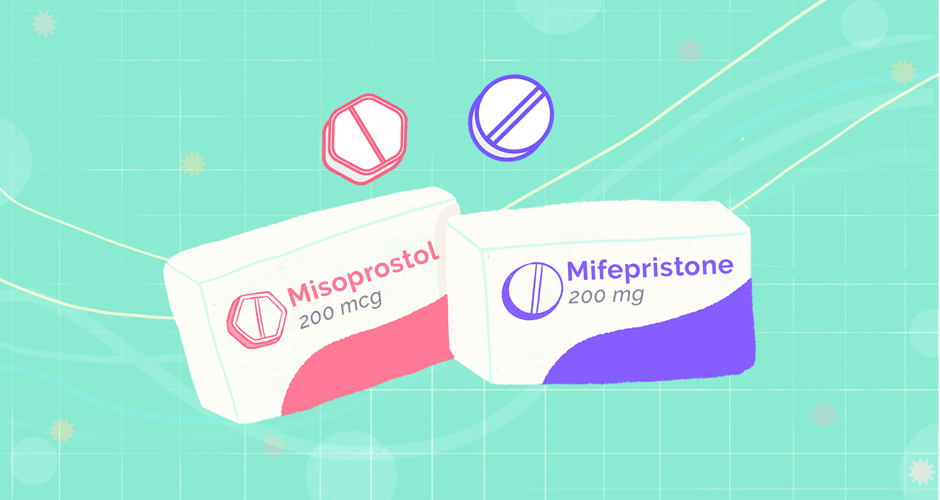
Medical Abortion: What You Need To Know Before Making A Decision
Medical abortion is a method of ending a pregnancy in which medication is used to bring about the termination.
The purpose of this article is to provide comprehensive information about medical abortion so that individuals can make informed decisions.
Medical abortions can be performed safely in the first trimester (3 to 14 weeks) and the second trimester (14 to 24 weeks or further if medically indicated).
What Is The Definition Of Medical Abortion?
The two most common medications used in combination for termination of pregnancy are Mifepristone (RU486) and Misoprostol (Cytotec).
Mifepristone works by interrupting the hormone progesterone that is important for preparing the endometrium for implantation of the pregnancy and causes the lining of the Uterus to shed and leads to termination.
Side effects are generally mild and may include rash, nausea, abdominal pain, vaginal bleeding or headache.
Misoprostol works by causing the Uterus to contract and causes the pregnancy tissue to pass. Most common side effects using Misoprostol include chills, itchy palms, fever, rash, nausea, vomiting, lower back and abdominal pain.

Medical abortion can be done using Oral mifepristone (Mifeprex) and oral misoprostol (Cytotec).
Effectiveness Of Medical Abortion:
Using Mifepristone alone is only 40 to 60% effective in terminating pregnancies that are 8 weeks or less. The use of Misoprostol alone has a 90 to 92% success rate in ending pregnancies at 8 weeks or less.
The combination of Mifepristone and Misoprostol is 95 to 99% successful in terminating pregnancies that are 6 weeks or less.
The medications are typically taken at different times, with Mifepristone being taken first and Misoprostol being taken the same day or a day or two later.
Cramping and bleeding typically begin within a few hours to a day after taking misoprostol, and the heaviest bleeding and pain occur when the pregnancy tissue passes through the cervix. This process can take several hours to a few days.
Contraindications To Medical Abortion:
Contraindication to using the medical abortion procedure include pelvic infection or sepsis (bacteria in blood), hemodynamic instability or shock (unable to maintain adequate blood flow to vital organs), liver disease and allergy to misoprostol.
If the woman has an IUD in place, it must be removed before treatment.
What Are The Medical Abortion guidelines?
The guidelines for medical abortion vary by country, but generally, medical abortions can be performed up to 14 weeks after the last menstrual period.
In some cases, medical abortions may be performed up to 24 weeks or later if there is a medical indication.
What Is The Success Rate Of Medical Abortion At 6 Weeks?
The success rate of medical abortion at 6 weeks or less is nearly 100%. Most women say they experience little or no discomfort and the bleeding they experience is similar to their menstrual cycle.
As the age of the pregnancy increases, the success rate of the medical abortion decreases.
What Is The Safest Method Of Termination Of Pregnancy Before 12 Weeks?
The safest method of termination of pregnancy before 12 weeks is the use of the abortion pill. This method is safe, effective, and can be done in the comfort of one’s home.
How Painful Is a Medical Abortion?
The level of pain associated with a medical abortion can vary from person to person. Some women experience mild to moderate cramping, while others may have more intense pain.
Over-the-counter pain relievers manage the pain and discomfort in 90 to 92% of patients. In a small percentage of cases, prescription pain medication may be necessary.

Cramping and bleeding usually starts 1-4 hours after taking the misoprostol.
What Are Medical Abortion Symptoms?
The symptoms of medical abortion can vary, but commonly include lower abdominal cramping, vaginal bleeding, and discharge. Some women may also experience nausea, vomiting, or diarrhea.
If you experience severe pain, bleeding more than two pads an hour for more than two hours, or a temperature of 100.4 that does not go away, it is important to contact your medical provider.
What Are The Long-Term Side Effects Of Medical Abortion?
There are no known long-term side effects of medical abortion. However, as with any medical procedure, there are potential short-term side effects, such as bleeding, cramping, and infection.
In Clinic Medical Abortion Procedures:
In-clinic abortions for medical abortions 14 weeks or further may be performed at an abortion clinic. It is important to find a reputable and licensed abortion clinic.

In-clinic abortion is a very safe, simple, and common procedure.
Wrapping Up
Ultimately, medical abortion is a decision that requires careful consideration and thorough research. Every woman needs to weigh the pros and cons of the procedure before deciding if it’s right for them.
Although the process may be frightening, those who have decided to go through with it often find themselves experiencing relief and closure afterwards.
If you have any questions or concerns, it is always best to consult with a healthcare provider.
The Fort Lauderdale Women’s Center is Offering The One Hour Abortion Pill Procedure – 3 to 14 Weeks. Patients who qualify may receive a significant discount in the price of the procedure if they meet certain criteria.
Call Us Now For Same Day Appointment.


Leave a Reply